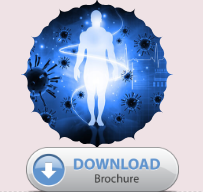Ana Poveda
Central University of Ecuador, South America
Title: Characterization of new therapeutic drugs against leishmaniasis
Biography
Biography: Ana Poveda
Abstract
Leishmaniasis is a largely neglected infection caused by Leishmania spp. parasites. Th e first-line treatment, antimonate meglumine, has a large number of adverse effects, high costs and is developing resistance. New alternatives are mandatory. Here we show the results obtained with synthetic compounds (bis(spiropyrazolone)cyclopropanes, Schiff bases) and well knownold antibiotics used against bacteria1. These compounds were chosen because many evidences indicate that bis(spiropyrazolone)cyclopropanes and Schiff bases have biological properties. The antibiotic selected was the fl uoroquinolones(FQ), a drug largely used against bacteria2. FQ are a good candidate since sequence alignments shows a good conservation of topoisomerases type II, the molecular target. To determine the leishmanicidal eff ect of drugs, a fluorescence method was optimized to determine MIC and IC50 in cultures of L. mexicana and L. braziliensis promastigotes3. In order to determine the toxicity and presence of DNA damage, bioassays with yeast were implemented (drop test using yeast mutants and comet assay). However, many compounds has a limited solubility. This limitation could be solved loading it into liposomal systems such as the transferosomes, ultradeformable nanovesicles4. Transferosomes were characterized in terms of size, polydispersity index, zeta potential, entrapment percentage, dissolution profile and physical stability. These nanovehicles enhanced the leishmanicidal activity compared with enrofloxacin in solution, around 15 times. So the nanoencapsulation could be an interesting approach to develop a topic formulation to treat cutaneous leishmaniasis.Our results indicate that two Schiff bases,one bis(spiropyrazolone)spirocyclopropane and one FQ, are potential candidates for alternative treatment of leishmaniasis. Next eff orts are oriented to assay these drugs in murine models.

